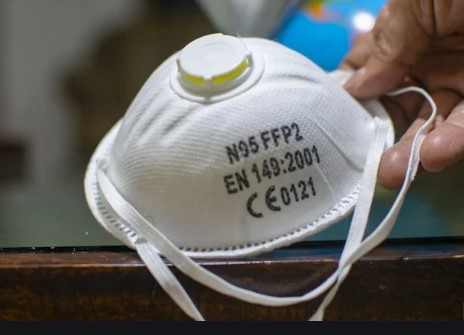New York: As we anguish after witnessing millions of Indians not wearing face masks or wearing them all wrong in public places amid surge in COVID-19 figures, a study led by Indian-American researchers has warned that even people wearing the combination of face shields along with masks with exhalation valves are not safe and can easily get the deadly coronavirus.
When someone carrying the COVID-19 virus coughs, aerosolised droplets expelled with the jet are able to move around the face shield visor with relative ease.
“Over time, these droplets can disperse over a wide area in both lateral and longitudinal directions, albeit with decreasing droplet concentration,” said Manhar Dhanak, department chair, professor and director of SeaTech at Florida Atlantic University (FAU).
“We were able to observe that face shields are able to block the initial forward motion of the exhaled jet, however, aerosolised droplets expelled with the jet are able to move around the visor with relative ease,” added Dhanak who co-authored the paper with Siddhartha Verma, lead author and John Frankenfeld, a technical professional at FAU’s Department of Ocean and Mechanical Engineering.
The N95-rated face mask with the exhale valve used in this study had a small amount of exhaled droplets that escaped from the gap between the top of the mask and the bridge of the nose.
Moreover, the exhalation port significantly reduced the effectiveness of the mask as a means of source control, as a large number of droplets passed through the valve unfiltered and unhindered, said the study published in the journal Physics of Fluids.
“There is an increasing trend of people substituting regular cloth or surgical masks with clear plastic face shields as well as using masks that are equipped with exhalation valves,” said Verma.
A driving factor for this increased adoption is better comfort compared to regular masks.
“However, face shields have noticeable gaps along the bottom and the sides, and masks with exhalation ports include a one-way valve which restricts airflow when breathing in, but allows free outflow of air. The inhaled air gets filtered through the mask material, but the exhaled breath passes through the valve unfiltered,” Verma explained.
For the study, researchers employed flow visualisation in a laboratory setting using a laser light sheet and a mixture of distilled water and glycerine to generate the synthetic fog that made up the content of a cough-jet.
They visualised droplets expelled from a mannequin’s mouth while simulating coughing and sneezing.
By placing a plastic face shield and an N95-rated face mask with a valve, they were able to map out the paths of droplets and demonstrate how they performed.
Results showed that the expelled droplets move around the visor with relative ease and spread out over a large area depending on light ambient disturbances.
“Visualisations for the face mask equipped with an exhalation port indicate that a large number of droplets pass through the exhale valve unfiltered, which significantly reduces its effectiveness as a means of source control,” the findings showed.
The key takeaway illustrates that face shields and masks with exhale valves may not be as effective as regular face masks in restricting the spread of aerosolised droplets.
“Widespread public adoption of the alternatives, in lieu of regular masks, could potentially have an adverse effect on ongoing mitigation efforts against COVID-19,” the researchers warned.
IANS
